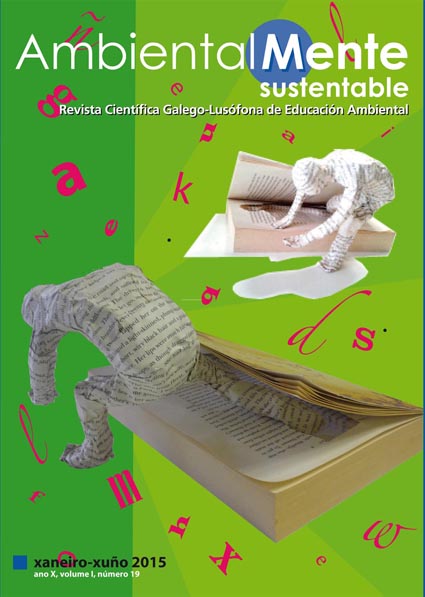Analysis of the Portuguese centers for environmental interpretation
Main Article Content
Abstract
Environmental Interpretation Centers (CIAm) are support structures for visitors who, having different origins, objectives and ways of functioning, use heritage interpretation strategies to interconnect visitors with local natural resources. Between strong criticism and high praise, covered by different denominations and formats, and presented good and bad practices, it is important to know the reality of the Portuguese Ciam so that articulation strategies can be improved and developed. The results of a general analysis of the Cia carried out in Portugal between 2012 and 2014 are presented in order to understand their vocation in supporting tourist activities with a strong component of environmental education and in the valorisation and protection of the natural heritage. The present work shows that these centers play an important role in the enhancement of natural areas, although they still have little planning and organization, either at the level of each center, or between the different centers that could operate in a network and develop more assertive actions. Among the aspects to be improved, the attraction of visitors and the use of interpretation techniques are highlighted. There are also regional differences that need to be considered so that these structures can evolve in the future and significantly increase their contribution to more sustainable tourism.
Keywords:
Downloads
Article Details
References
Fernández Balboa, C. (2007). La Interpretación del Patrimonio en Argentina: estrategias para conservar y comunicar bienes naturales y culturales. Buenos Aires: Administración de Parques Nacionales.
Green, P. “Wildman.” (1999). Future challenges for Australian and world interpretive methodology. International Journal of Heritage Studies, 5(3-4), 149-160.
Guerra, F. (2006). Interpretación do Patromonio e Educación Ambiental. AmbientalMENTEsustentable, I(1-2), 221-228.
Martín Piñol, C. (2012). El prodigio de los centros de interpretación: unos equipamientos con fecha de caducidad. Her&Mus, IV(1), 64-70.
Masters, D., & Carter, J. (1999). What Have We Got And Is It Any Good ? A practical guide on how to survey and assess heritage interpretation.
Mcnamara, K. E., & Prideaux, B. (2010). Reading, learning and enacting: interpretation at visitor sites in the Wet Tropics rainforest of Australia. Environmental Education Research, 16(2), 173-188.
Morales, J. (1994). ¿Centros De Interpretación? Carpeta Informativa Del Centro Nacional de Educación Ambiental-CENEAM. Retrieved from http://www.cidadeimaginaria.org/pc/InterpretCentros.pdf
Morales, J. (2001). Guía práctica para la Interpretación del Patrimonio: el arte de acercar el legado natural y cultural al público visitante (2a ed.). Sevilla: Consejería de Cultura - Junta de Andalucía.
Morales, J. (2006). Interpretación do Patrimonio (natural e cultural), unha disciplina para producir significados. AmbientalMENTEsustentable, I(1-2), 209-220.
Muñoz, M. (2008). Evaluación y Financiación del Uso Público en Espacios Naturales Protegidos. El Caso de la Red Española de Parques Nacionales.Tese de doutoramento, UAM, Madrid.
Muñoz, M., & Benayas, J. (2012). A proposed methodology to assess the quality of public use management in protected areas. Environmental Management, 50(1), 106-122.
Newsome, D., Moore, S., & Dowling, R. K. (2001). Natural Area Tourism: Ecology, Impacts and Management. Aspects of Tourism 4, Multilingual Matters.
Orr, D. W. (2004). Earth in Mind: On Education, Environment, and the Human Prospect (Vol. Special Ed). Washington: Island Press.
Pereira, H., Domingos, T., Vicente, L., & Proença, V. (2010). Ecossistemas e Bem-Estar Humano (1a ed.). Lisboa: Escolar Editora.
Serantes, A. (2011). Os Centros de Interpretación en Galicia : un recurso para o desenvolvemento turístico sostible? AmbientalMENTEsustentable, I (11-12), 101-121.
Tilden, F. (1967). Interpreting Our Heritage (3rd ed.). USA: University of North Carolina Press.
Wearing, S., & Neil, J. (2009). Ecotourism: Impacts, Potentials and Possibilities? Butterworth-Heinemann.
Wohlers, L. (2005). Nature Centres and Environmental Interpretation in the Baltic Sea Region-Project Eagle.



